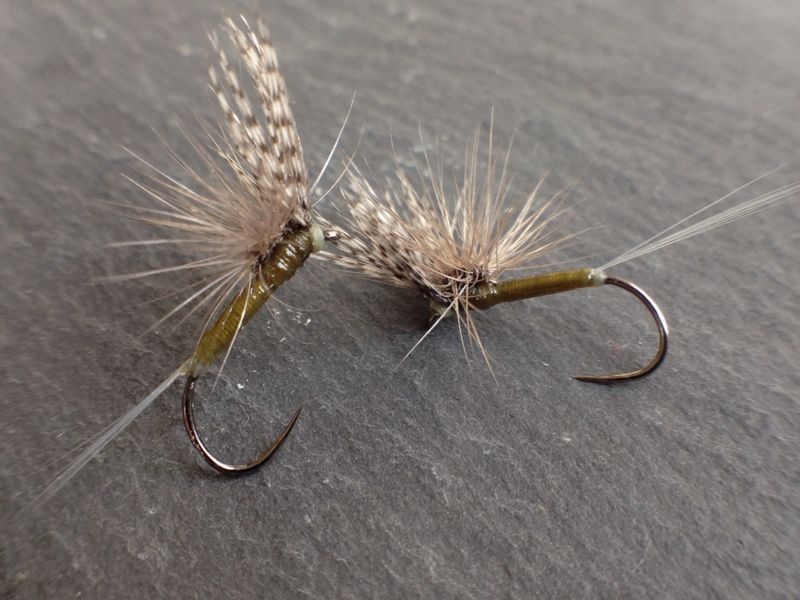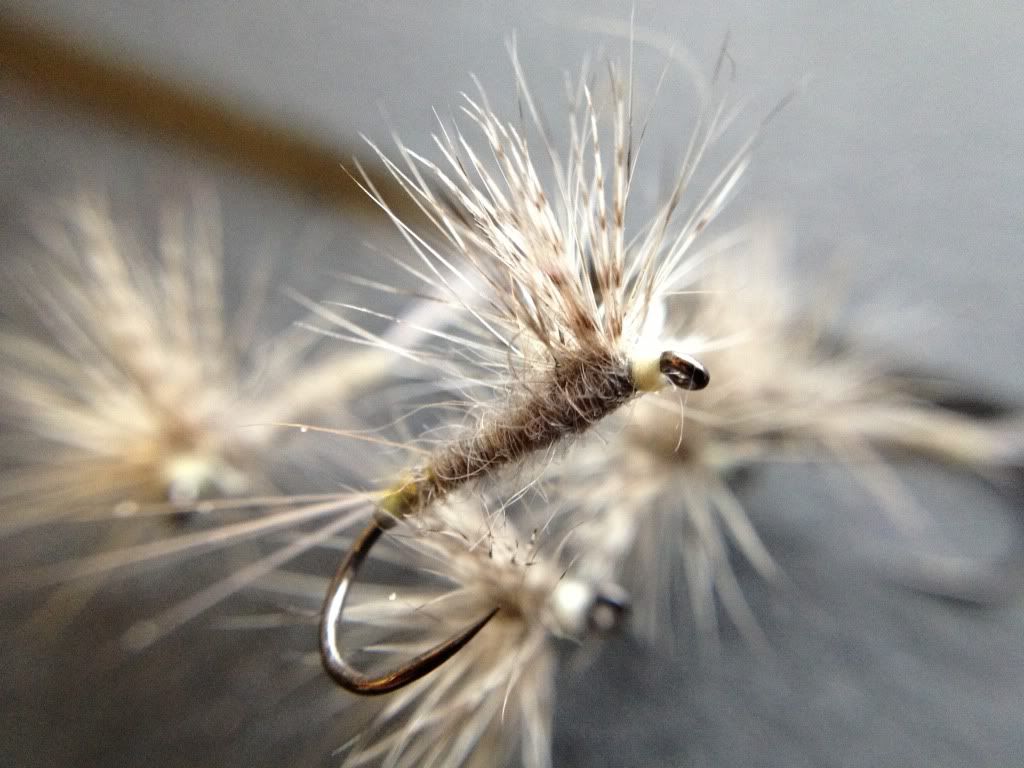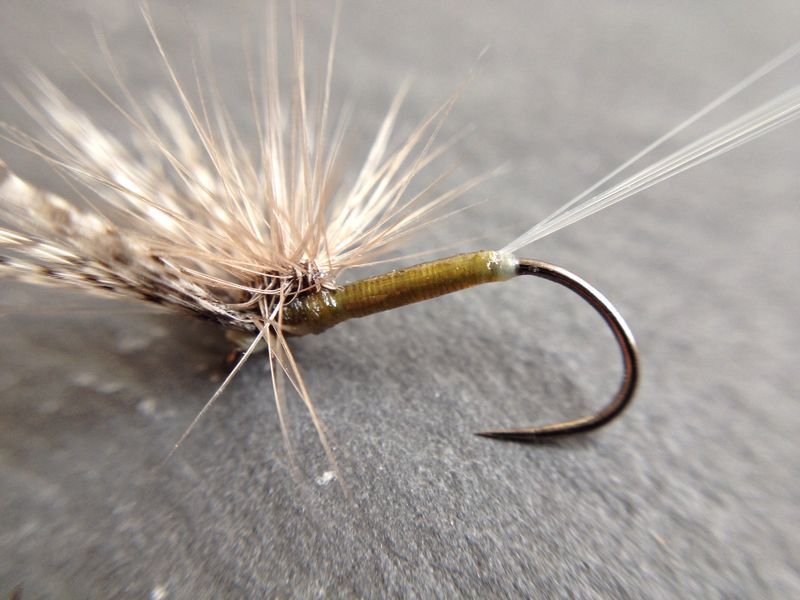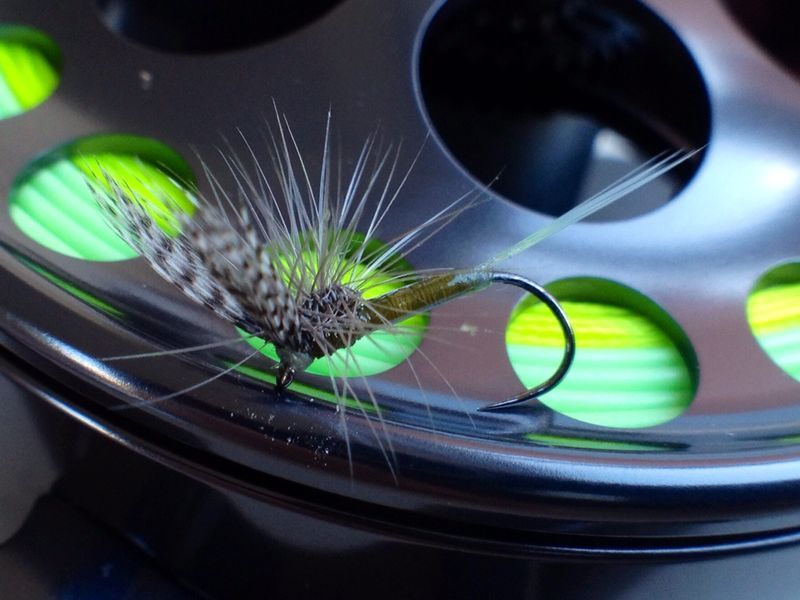Unlike my Northern brethren I haven't yet started fishing for trout. I have two weeks to go and I'm getting a bit feverish. I've had one session so far this year; I'll blame the weather for most of it. Things have been much more settled recently, the leaves are unfurling, my peach trees have been in blossom for a couple of weeks already. It seems certain that we won't have a repeat of last years unreasonably cold spring and that adds further to my anticipation.
As I live around an hours drive from most of my fishing I haven't spent any time near a river. I sit at home or work dreaming that the large dark olives have been hatching and steadily increasing in numbers as we head towards opening day.
I am about to join a club, giving me access to many miles of wild trout and grayling on three different rivers. This is the first time I will have been a member of a fly fishing club, I can't wait for the new opportunities that await.
 |
| The Barbour Paradun |
  |
| The Muskrax showing it's silk abdomen and the PhD with it's paraloop hackle, mallard wing. |
Colour wise I've narrowed it down simply to two colours, light and dark olive. The silk used is pearsals silk in one colour, yellow. To get a darker fly I pull the silk through cobblers wax, incidentally just as you would when tying the greenwells. The liquid wax is coloured too, a rich yellow olive which also helps to colour the fly.
The fly itself is simple to tie. The tail is made up of micro-fibbets, medium dun and dark dun for light and dark flies respectively. The hackle is tied in the normal paraloop way, light and medium grey dun are all you need. Mallard silver flank is used for the wing. Tied at the front and split into a V by the thread used for the paraloop post. In the absence of mallard dyed medium dun, I have used a marker pen to colour the wing on the darker version. As yet I don't know how colourfast it is.
Aside from the light and dark versions I have tried a couple of other colours I bought at the BFFI. I have a nice light(ish) olive silk that may mean I won't need to pull the yellow through cobblers wax thus speeding up tying. The other colour is a yellow olive.
The new colours give some interesting results. The light olive silk comes out a little darker than the yellow silk pulled through cobblers. The yellow olive silk turns a dark rich brown which may not be entirely useful for baetis imitations but a useful colour to be aware of.
I can't wait for my first afternoon on the river, fingers crossed I'll get to tie a dry-fly on.





superb flies ben , sure they'll do well.
ReplyDeleteNicely tied Ben, you have given me a bit of inspiration. Off to the vice now for a wee play around ;)
ReplyDeleteThanks for the kind commented I shall report future successes.
ReplyDelete